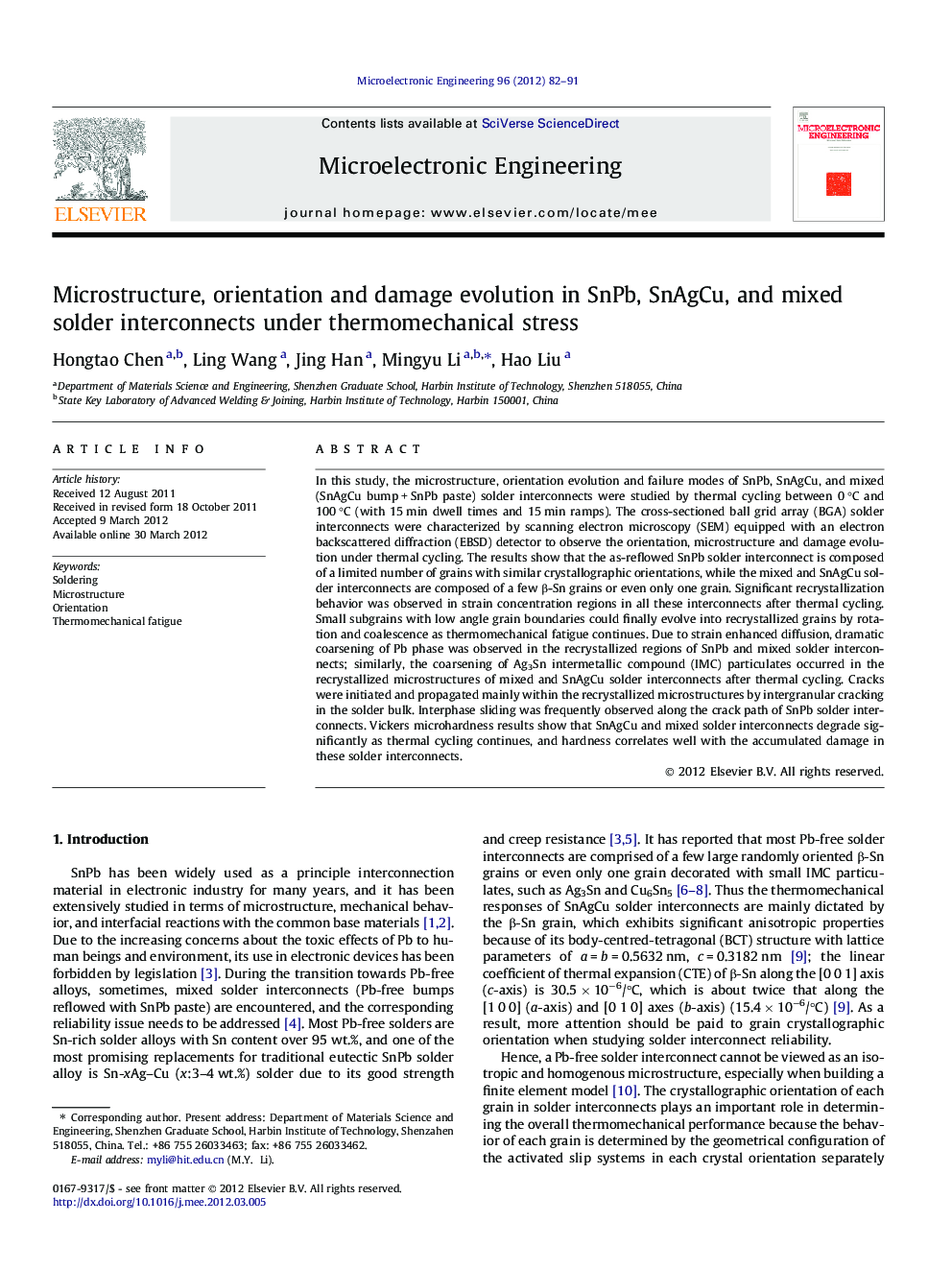| کد مقاله | کد نشریه | سال انتشار | مقاله انگلیسی | نسخه تمام متن |
|---|---|---|---|---|
| 540289 | 1450385 | 2012 | 10 صفحه PDF | دانلود رایگان |

In this study, the microstructure, orientation evolution and failure modes of SnPb, SnAgCu, and mixed (SnAgCu bump + SnPb paste) solder interconnects were studied by thermal cycling between 0 °C and 100 °C (with 15 min dwell times and 15 min ramps). The cross-sectioned ball grid array (BGA) solder interconnects were characterized by scanning electron microscopy (SEM) equipped with an electron backscattered diffraction (EBSD) detector to observe the orientation, microstructure and damage evolution under thermal cycling. The results show that the as-reflowed SnPb solder interconnect is composed of a limited number of grains with similar crystallographic orientations, while the mixed and SnAgCu solder interconnects are composed of a few β-Sn grains or even only one grain. Significant recrystallization behavior was observed in strain concentration regions in all these interconnects after thermal cycling. Small subgrains with low angle grain boundaries could finally evolve into recrystallized grains by rotation and coalescence as thermomechanical fatigue continues. Due to strain enhanced diffusion, dramatic coarsening of Pb phase was observed in the recrystallized regions of SnPb and mixed solder interconnects; similarly, the coarsening of Ag3Sn intermetallic compound (IMC) particulates occurred in the recrystallized microstructures of mixed and SnAgCu solder interconnects after thermal cycling. Cracks were initiated and propagated mainly within the recrystallized microstructures by intergranular cracking in the solder bulk. Interphase sliding was frequently observed along the crack path of SnPb solder interconnects. Vickers microhardness results show that SnAgCu and mixed solder interconnects degrade significantly as thermal cycling continues, and hardness correlates well with the accumulated damage in these solder interconnects.
(a) EBSD orientation map and enlarged area of subgrains in mixed solder interconnect and (b) grain boundary map of enlarged area in (a).Figure optionsDownload as PowerPoint slideHighlights
► A limited number of grains with similar orientation were found in SnPb solder joints.
► Recrystallization occurred in strain concentration region by subgrain rotations.
► Strain enhanced coarsening of Pb and Ag3Sn occurred in recrystallization region.
► Recrystallized microstructure is significantly degraded.
► Fine grains produced after recrystallization facilitate grain boundary sliding.
Journal: Microelectronic Engineering - Volume 96, August 2012, Pages 82–91